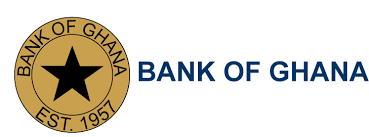International trade at Ghana’s two main harbours (Tema and Takoradi), as measured by laden container traffic for inbound and outbound containers, declined sharply during the first nine months of 2022 mainly on account of ongoing geographical tensions.
Data from the Bank of Ghana showed that total container traffic decreased by 18.9 percent year-on-year to 50,807 in September 2022, down from 62,656 for a similar period in 2021.

“In cumulative terms, total container traffic for the first three quarters of 2022 dipped by 13.2 percent to 502,530 compared with 579,202 for the corresponding period of last year. The relative decline in port activities was due to a slowdown in international trade activities over the review period amid ongoing geopolitical tensions.”
Bank of Ghana
During an interaction with a section of journalists from Tema at a Press Soiree organized by the Ghana Ports and Harbours Authority (GPHA) to express its appreciation to the media for the year, Mr. Michael Luguje, Director General of the GPHA, acknowledged that Ghana’s ports, indeed recorded a significant drop in cargo between January and September 2022.

However, notwithstanding a challenging 2022 for port activities, Mr. Michael Luguje underscored that the “GPHA is hoping and believing for a better traffic flow to Ghana’s ports in 2023.”
Mrs Sandra Opoku, Director of Tema Port, also stated that though the numbers for transit cargo hit the upper ceiling during the period, all the others experienced a dip.
Just as the Director General, Mrs Opoku also noted that the GPHA expects 2023 to come along with good fortune now that the cedi is stabilizing as many of the importers are adopting ‘the wait and see’ attitude, leading to the drop in the volumes.
Low export drive in Ghana
The Director of Tema Port stated that one of the things the GPHA found in its operations was that Ghana has a very low export drive, even though the Ghana Export Promotion Authority is doing very well to reverse the trend.

Mr. Samuel Ntow Kumi, General Manager, Corporate Planning at the GPHA, on his part, said the Port Authority invested heavily in infrastructure and also running operations that are expected to be recovered through tariffs.
Mr Kumi disclosed that the Tema and Takoradi Ports are being developed with commercial debts and collaborations with the private sector without any budgetary support from the government.
Mr Kumi recalled that before tariffs were set, a rigorous process was adopted which included stakeholder engagement with freight forwarders, and regulatory agencies, among others. He said GPHA was the sole establishment that invested in the Ports while its tariffs were less than 12 percent of all charges on cargoes.
Mr Kumi therefore, called on stakeholders to understand the situation and bear with them whenever there is an increment in tariffs.
Journalists, during the soiree, also commended the GPHA for the cordial relations with the media and asked questions on the Keta Port, Tema Shipyard, and MPS concession, among others.
The Keta Port
Plans are underway to develop Ghana’s third commercial port in Keta in the Volta Region, close to the Volta River. This project will expand on the country’s plans to develop port infrastructure, expand the existing ports of Tema and Takoradi and speed up the development of the proposed inland ports at Boankra and Mpakadan.
The GPHA announced the findings of the Keta port project’s feasibility study in November 2021 at a stakeholder meeting in the capital, Accra.

One of the recommendations of the feasibility study was that the Keta Port should accommodate containerized, bulk, and oil and gas shipments. A shipyard facility is also planned. The project will include the entire Port City, including all road and rail infrastructure along with residential recreational facilities.
“We have seen that it is a port that is feasible, viable and attractive. If you all go back into the history of many ports, including here in Ghana, you would realize that none of the ports was built based on immediate first- and second-year high profitability. It is a very progressive journey towards building the port.”
Michael Luguje
Phase 1 of the project, named “Port Nucleus”, estimated at US$600 million, is expected to comprise main facilities which would be key drivers of the commercial port. The facilities include a commercial port gate with access control and administration building, a multipurpose terminal with a berth of 500 metres, a RoRo Dock, an oil terminal comprising a tank farm and an oil jetty.
READ ALSO: The Akufo-Addo Government Owes Ghanaians An Apology- Apaak On Return Of Quota System For Colleges





















